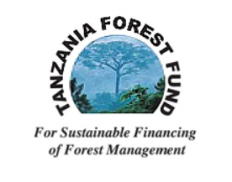Share
Print

About Tanzania Forest Fund
Tanzania Forest Fund is a Conservation Trust Fund established by the Forest Act Cap. 323 [R.E. 2002] under Sections 79 – 83, as a mechanism to provide long term, reliable and sustainable financial support to Forest Conservation and Sustainable Forest Management (SFM) in the Country.
The Tanzania Forest Fund is a Public Fund which was made operational in July 2010 as a Not-for-Profit organization governed by Board of Trustees. The main intent of establishing the Tanzania Forest Fund is to mobilize and provide stable and long term sources of funding for conservation and sustainable management of natural resources in Tanzania.
The major roles of the Fund include:- Mobilizing financial resources through Fundraising, Investments and Services; Funding Programmes and /or Projects through award of grants ; and supervising and administering Fund resources and operations as stipulated under the provision which established by the Act.
Tanzania Forest Fund operates throughout Mainland Tanzania and provides assistance to various stakeholders who are committed to sustainable management of forest resources including improving livelihoods of communities adjacent to forests, protected areas and forest plantations. Priority areas for funding includes forest resource conservation and management aimed at ensuring proper forest land management as well as ecosystem conservation, community based conservation and sustainable livelihoods focusing on promoting community conservation initiatives at improving benefit sharing of community adjacent to forest resource base, and applied and adaptive research on management of forest resources and livelihood.
The sources of funds for the Fund are levy of 2% of every prescribed fee payable under the Forest Act; a levy of 3% of any royalty payable under the Act; grants, donations, bequests or such sums contributed by any private individuals, corporate bodies, foundations, or international organizations or funds within or outside the country; any sums realized by sale of any forest produce confiscated under any of the provisions of the act; any income generated by any project financed by the Fund, due allowance being made for any necessary expenses which must be met by any such project; and any such funds acquired from various sources.
Environmental scanning for The Tanzania Forest Fund was conducted to determine the internal and external factors that would influence its success. Scanning identifies Strengths, Weaknesses, Challenges and Opportunities (SWOC) existing in the environment. Internal environmental scanning was carried out to assess interaction within the Fund on access to financial resources, awareness, organizational structure and operational potential. While external analysis involves analysis of stakeholders of the Fund, their roles, expectations and potential impacts. Discussions, consultative meetings, and surveys were tools used to assess the environment.
The Fund is envisaged to address seven key result areas (KRAs). Each key result area addresses the Fund Strategic Objective. The Strategic Objectives include:- Public awareness on the importance of the protection, development and sustainable use of forest resources promoted; Community forestry conservation and protection initiatives promoted and developed; Applied and adaptive Research related to forestry funded; Tanzania to benefit from international initiatives and funds directed towards the conservation and protection of biological diversity enhanced; Individuals and groups participation in public debates and discussions on forestry assisted; Compliance with Forest Act and regulations by individuals, groups and communities ensured; and Institutional capacity to raise funds, manage and organise funding attained. Under each Strategic objective, targets were set to address each objective. A total of 16 targets were set to address the seven strategic objectives for the Fund. Key performance indicators for each strategic objective and targets were developed to assess implementation performance.
To make sure that resources are allocated in the most efficient manner, the Fund developed this Strategic Plan to guide the implementation process of its objectives over the next three years (2012/13- 2014/15). For the Fund to implement this Strategic Plan properly and effectively, implementation and coordination framework is crucial. This will strengthen the capacity of the Fund in terms of staffing, systems and facilities. As part of the implementation framework, monitoring and evaluation will be undertaken to track progress of the Fund. The lessons learned will be incorporated into future plan.
